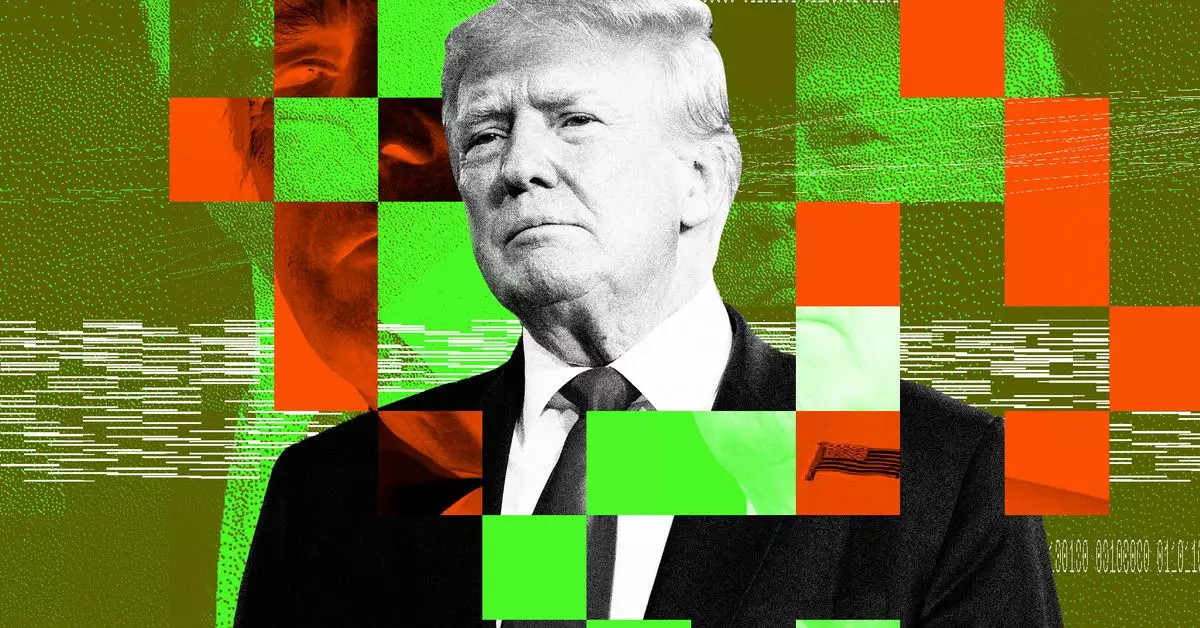In recent months, World Liberty Financial has emerged as a significant topic of discussion, especially among cryptocurrency enthusiasts and financial analysts. Spearheaded by notable figures such as former President Donald Trump and his associates, the platform is touted as a revolutionary solution for those burdened by traditional banking systems. However, as enticing as these claims may sound, the lack of concrete information surrounding the platform raises crucial questions regarding its viability and intention.
World Liberty Financial has been framed by its proponents as a means to liberate “the average American” from what they consider an oppressive banking structure. Trump himself has taken to social media, proclaiming that this platform will empower the unbanked and those sidelined by conventional financial institutions. Such statements resonate strongly in a climate where many individuals feel disenfranchised by economic institutions that seem to prioritize profits over people. However, one must scrutinize how World Liberty Financial plans to bridge this gap—details remain notoriously scarce.
The absence of a clear operational framework or mission statement poses significant skepticism toward these claims. Knowing what World Liberty Financial intends to do, aside from histrionics about decentralization and empowerment, is essential for any discerning investor or interested party. The rhetoric surrounding the platform gives the impression of a flashy marketing campaign rather than a robust financial initiative ready to launch into a complex economic landscape.
In what can be seen as an attempt to lure early investors, the platform has opened its sign-up process to a selective audience: U.S.-based accredited investors and non-U.S. persons. This selective criterion, primarily defined by the Securities and Exchange Commission (SEC), seems at odds with the very promise of aiding the unbanked. It raises the question of who the platform genuinely aims to serve.
By limiting access to accredited investors—defined as individuals with significant financial means—World Liberty Financial appears to contradict its professed mission. The SEC estimates that around 24 million American households qualify as accredited investors, which, while impressive, is still a fraction of the population. Crucially, these demographics are not necessarily aligned with the underserved communities that Trump and his sons claim to champion.
Token Distribution: Transparency Vs. Secrecy
One of the more perplexing components of World Liberty Financial is its governance token, known as WLFI. Initial reports outlined a distribution where 70% of the token supply would be retained by the founding members and associates of World Liberty Financial. This percentage quickly morphed into 63% during public discussions, raising further questions about the reliability of the information being presented.
Most concerning is the statement that “additional information” about the platform would only be shared with individuals who successfully completed the KYC (Know Your Customer) process. This approach not only restricts valuable information from the broader public but also feeds into the narrative of exclusivity that comes with such financial projects. It also plays into a broader concern about transparency in the cryptocurrency world, where the line between being ‘open-source’ and elitist can often become blurred.
The Root of Municipal Concerns
World Liberty Financial’s alignment, or apparent misalignment, with existing regulatory frameworks is another point of contention. The company cites “outdated policy and regulations” as obstacles limiting its outreach efforts, which raises questions about its understanding of the existing financial landscape. Instead of innovating within these regulatory constraints, the platform’s developers seem to lean on the narrative that they’re being hindered rather than demonstrating how they might adapt.
Despite the platform’s claims targeting empowerment and innovation, its trajectory so far appears to deviate more toward traditional financial structures than the promised revolutionary alternative.
In sum, while World Liberty Financial has marketed itself as a harbinger of change, it currently exists in a murky landscape of ambiguity and contradiction. The grandiose promises made by its high-profile figureheads are yet to be substantiated by clear, transparent, and actionable plans. Without a solid understanding of what World Liberty Financial aims to achieve, it risks becoming yet another addition to the long list of cryptocurrency endeavors that fizzled out before delivering tangible results. For now, the question remains: what is World Liberty Financial, and how does it intend to fulfill its promise? Only time will tell, but without earnest engagement with its audience, the platform faces an uphill battle for credibility.

